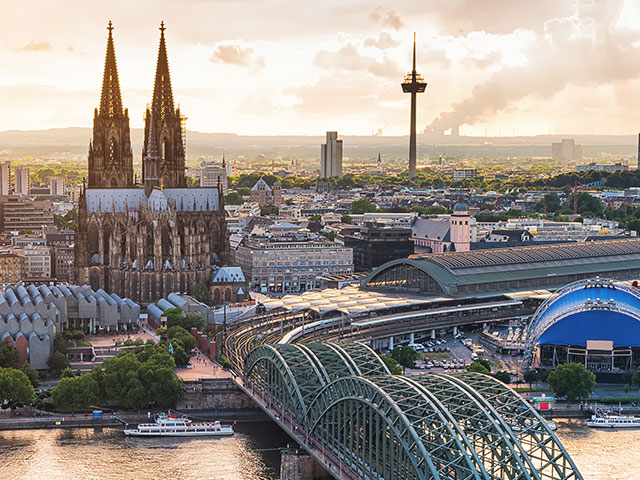 Esch-sur-Alzette (Esch-Uelzecht in Luxembourgish, Esch an der Alzig in German), or simply Esch, is
a 35,040
inhabitants town in the southwestern part of Luxembourg, the second most important and populated in
Luxembourg. This town is crossed by Alzette river and it's near the French border of the country, in the south-west part of the country.
Esch-sur-Alzette (Esch-Uelzecht in Luxembourgish, Esch an der Alzig in German), or simply Esch, is
a 35,040
inhabitants town in the southwestern part of Luxembourg, the second most important and populated in
Luxembourg. This town is crossed by Alzette river and it's near the French border of the country, in the south-west part of the country.How do I arrive to Esch-sur-Alzette?
- Train: there are trains from Esch-sur-Alzette to Luxembourg City every 30 minutes (aprox. 25 minutes).
- Bus: there are often buses Luxembourg City (aprox. 25 minutes) from Esch-sur-Alzette.
- Car: if you rented a car, from Esch-sur-Alzette it can be reached Dudelange (aprox. 15 minutes), Luxembourg City (aprox. 20 minutes) and Diekrich (aprox. 45 minutes). It's close to the border with France so it's can be reached from French towns and cities like Thionville (aprox. 25 minutes) or Metz (aprox. 45 minutes) too.
History
What can I visit in Esch-sur-Alzette?
- Luxembourg Science Center (9-17 Mon-Fri; 10-18 Sat-Sun; 10€/ 7€/ free adults/ retiree and students/ kids under 6): amazing science and technology museum which makes you discover and test more than 100 stations and shows. It's especially recommend for people travelling with children.
- City of Science and Blast Furnace in Belval (10-19 Wed-Fri, 10-18 Sat and 14-18 Sun from Apr to Oct; 5€/ 3€/ free adults/ retiree and students/ kids under 12): former high oven where cast iron was produced untill 1997 in Belval district. When it was shut down the area was transformed and integrated in the town, creating this museum. It explains how cast iron is produced, an overview of southern Luxembourg development and has a 40 m high viewing point from where you can have a nice view of the town.
- National Museum of the Resistence (14-18 Tue-Sun; free): museum which shows traces of Luxembourgish history between 1940 and 1945 during the Nazi Germany occupation, the reactions of the people, Nazi represion and concentration camps and the Luxembourgish Jews fate.
- Museum of the Cockerill Mine (8-12 and 13-17 Mon-Fri; free): unique mine which major role in Luxembourg’s economic boom and whose extraction was largely made by galleries. Nowadays it hosts a museum which displays minery objects and vehicles, fossils found during work and photographies.
- In the nearby town of Rumelange (Rëmeleng in Luxembourgish, Rümelingen in German), 7 km south-east from Esch, can be found the National Mining Museum (14-18 Tue-Sun from Jul to Aug; 14-18 Thu-Sun from Apr to Jun and Sep; 9€/ 7€/ 5€ adults/ retiree and students/ kids under 15), a museum about minery history from the 19th century to the 1980s, partially placed in a mine gallery. It shows the arduous nature of the miner's work.
- Just 11 km west from Esch is located Differdange (Déifferdeng in Luxembourgish and Differdingen in German), a town with 26,000 inhabitants which is the third most populated in the country. It some interesting attractions like Differdange Castle (16th century castle used as headquarters of the University of Miami in Europe), Differdange Old Abbey (13th century Cistercian abbey) and Fond-de-Gras, a complex formed by the mining train (7€/ 5.50€/ free adults/ kids under 12/ kids under 4) which takes the visitor to the village of Lasauvage. Near it there are also Titelberg (a Celtic settlement) and the Giele Botter (former mine being redeveloped).
- In the area there are some trails like RedRock MTB Trail "Haard-red", a demanding mountainbike trail which goes around Rumelange and Dudelange.
 |
| Blast Furnace in Belval |
 |
| National Museum of Resistence |
 |
| Local Museum Dudelange |








 19:23
19:23
 Banknotemaniac
Banknotemaniac
 Posted in:
Posted in: 



